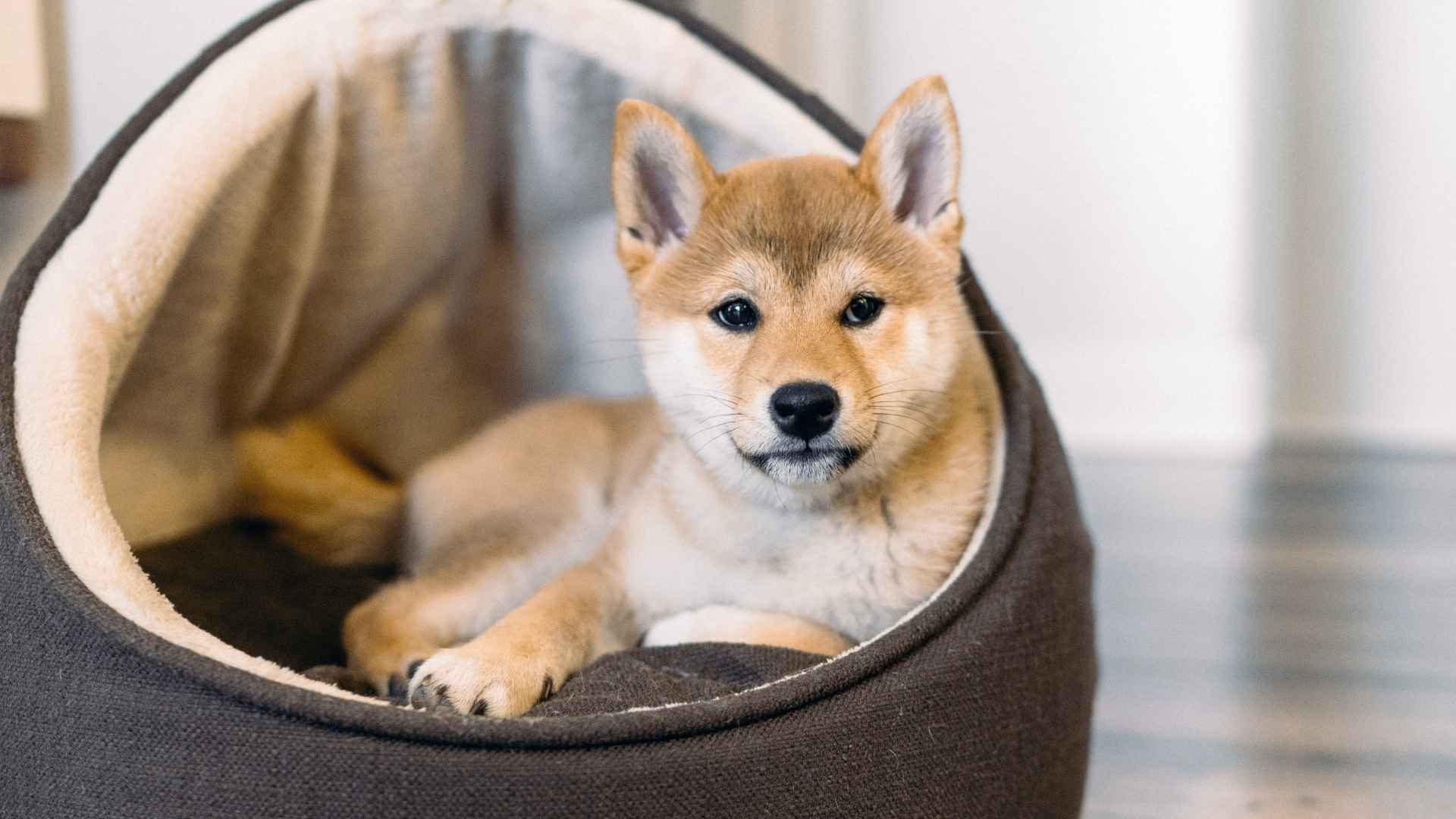Leaving your dog home alone can be stressful for both you and your pup. While some breeds thrive on constant companionship, others are more independent and can comfortably manage a few hours of solo time. Choosing the right dog breed for your lifestyle is essential, especially if work, errands, or other commitments take you out of the house regularly.
Fortunately, there are breeds that balance affection with independence. These dogs aren’t overly clingy “Velcro” pets; instead, they are content to nap, play with toys, or simply relax until you return. They still crave love and care, of course, but they won’t experience intense separation anxiety if left on their own for a reasonable stretch of time.
From sturdy working breeds to calm lap dogs, there’s an ideal companion for every situation. Whether you live in an apartment, a busy city, or a quiet suburban home, these breeds offer the reassurance that you can step out for a few hours without stress, for you or your furry friend.
Dog Breeds That Can Be Left Alone For Few Hours Without Stress
1. French Bulldog
The French Bulldog affectionately called the “Frenchie,” is a compact and muscular small breed adored for its trademark bat-like ears and charming, playful nature. The AKC describes the French Bulldog as a playful and intelligent companion.
Originating in the 1800s as companions for lace workers in France, Frenchies have since become one of the world’s most beloved urban pets. Standing around 11–12 inches tall and weighing between 16–28 pounds, they boast a smooth, short coat and a square, wrinkled face that’s instantly recognizable.
Their life span typically ranges from 10–12 years, making them steady companions for years. Known for being affectionate yet low-maintenance, they fit seamlessly into apartments and busy lifestyles.
Exercise
French Bulldogs don’t require intense workouts, but they do need at least 15 minutes of daily activity to stay healthy. Short walks and a couple of brisk breaks spread throughout the day are ideal, as their flat faces make them prone to overheating during strenuous exercise. Keep outdoor sessions brief in warm weather and focus on gentle activities indoors to keep them happy and safe.
Fun fact: Despite their clownish personalities, Frenchies rarely bark, which makes them perfect neighbors in any apartment building.
2. Basenji
The Basenji, often called the “barkless dog,” is one of the most unique breeds you’ll encounter. Instead of a typical bark, this small hound produces an odd yodel-like sound, adding to its exotic charm. PetMD notes that Basenjis are elegant and nimble dogs, with the impressive ability to leap straight up into the air.
Originating from Central Africa, the Basenji has a rich history as a hunting companion, known for its intelligence and cat-like grooming habits. Standing about 16 to 17 inches tall and weighing around 22 to 24 pounds, this sleek dog is compact yet athletic, with a tightly curled tail and a short, glistening coat that requires minimal maintenance.
With a lifespan of 13–14 years, the Basenji’s independent nature makes it a good fit for owners who may need to step out for a few hours, as it can entertain itself without much fuss.
Exercise
Despite its calm demeanor indoors, the Basenji has high energy needs and requires about 60–90 minutes of daily exercise. Activities like brisk walks, fetch, or canine sports keep it physically and mentally engaged. Because Basenjis lack road sense, outdoor time should be supervised or on a leash.
Fun Fact: Basenjis are so clean and self-sufficient that they often groom themselves like cats.
3. Chow Chow
The Chow Chow, often nicknamed the “lion dog” for its impressive mane-like ruff, is a striking and dignified breed with roots tracing back to ancient China. Britannica states that the Chow Chow has a sturdy, compact build, characterized by a broad head and a dense, heavy coat.
Standing 17–20 inches tall and weighing between 45–70 pounds, this dog boasts a dense double coat in shades of red, black, cream, cinnamon, or blue. With their blue-black tongue, almond eyes, and unique stiff-legged gait, Chow Chows radiate an aristocratic charm.
Known for their independence and aloof nature, they are naturally less prone to separation anxiety, making them suitable for busy owners with hectic schedules. Living 8–12 years, these loyal yet reserved dogs bond deeply with their families but remain cautious around strangers.
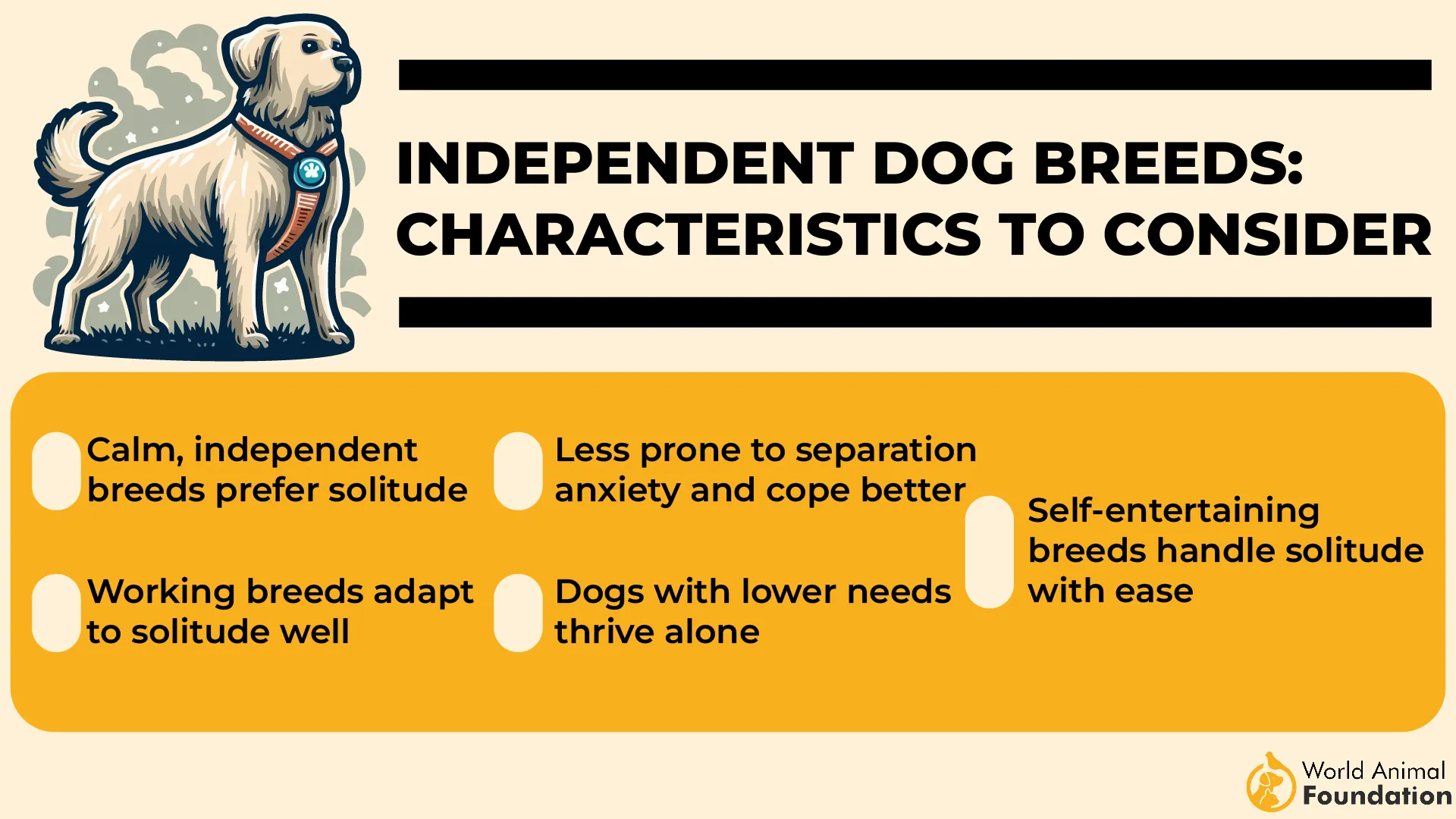
Exercise
Despite their noble demeanor, Chow Chows have moderate activity needs. Daily walks and light play are sufficient to keep them content but avoid exercising them in hot or humid weather as their thick coats can lead to overheating. Rough play or intense workouts aren’t their styles—they thrive best with calm, structured routines.
Fun Fact: Chow Chows are famously cat-like, often grooming themselves and even preferring alone time, much like a feline.
4. Bullmastiff
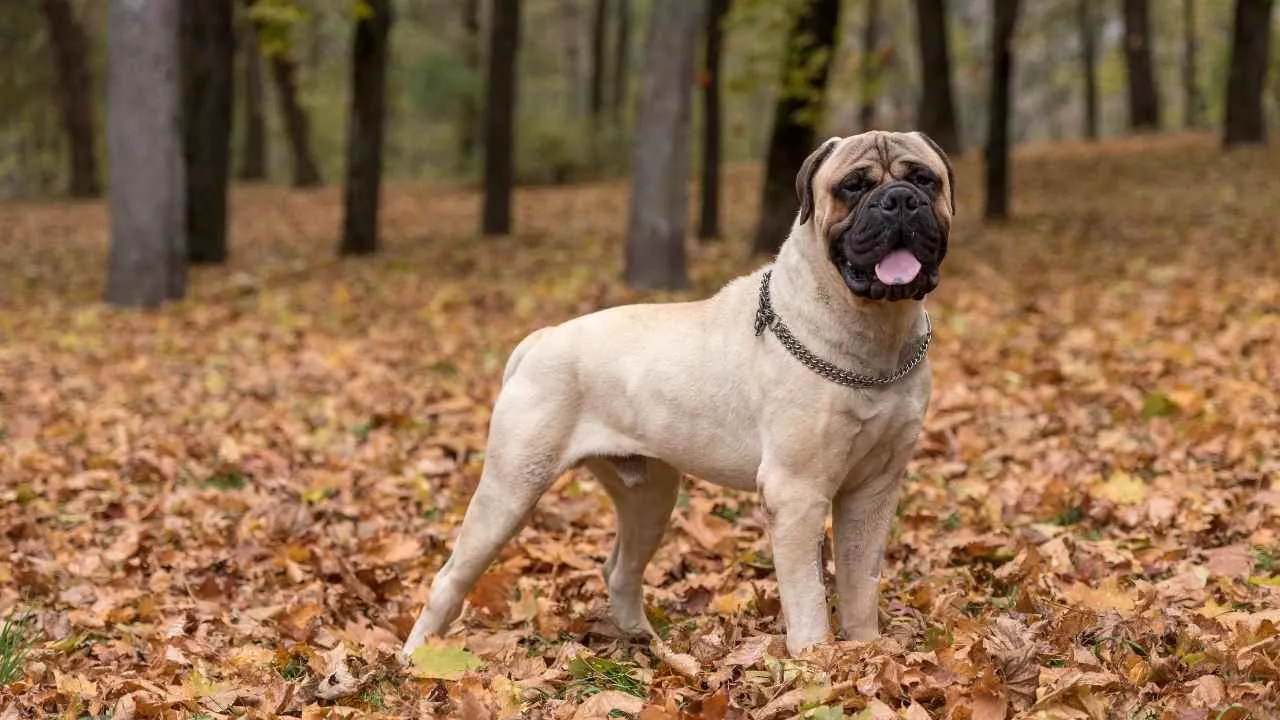
The Bullmastiff, often called the “Gamekeeper’s Night Dog,” is a powerful yet gentle breed created in 19th-century England by crossing Bulldogs and Mastiffs. Standing 24–27 inches tall and weighing between 100–130 pounds, this imposing guardian was originally bred to protect estates from poachers.
Despite its size, the Bullmastiff is surprisingly calm indoors and is known for its affectionate nature toward family members. Its short, dense coat in shades of fawn, brindle, or red requires minimal upkeep, and its typical life span ranges from 7 to 9 years.
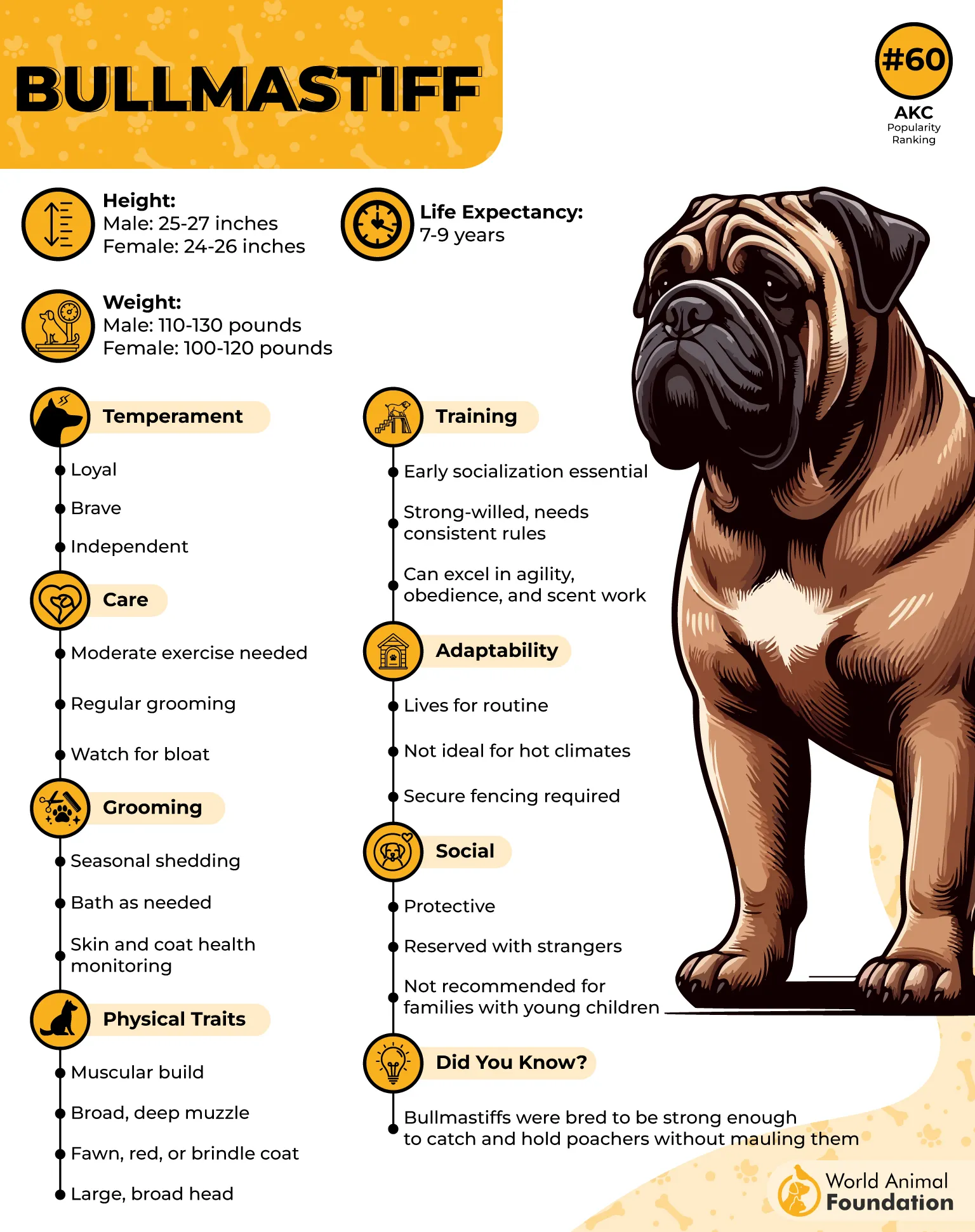
Exercise
Bullmastiffs have moderate exercise needs for their size. Daily walks and short play sessions in a secure yard are ideal to keep them healthy without overexertion. Unlike high-energy breeds, they’re not suited for long-distance runs, preferring brisk strolls and relaxed downtime instead.
Their balanced temperament makes them well-suited for households where owners may be away for a few hours — they’re often content to nap or quietly patrol their “castle” while waiting.
Fact: Despite their massive frame, Bullmastiffs were bred to pin and hold poachers without mauling them, showing their blend of strength and restraint.
5. Shiba Inu
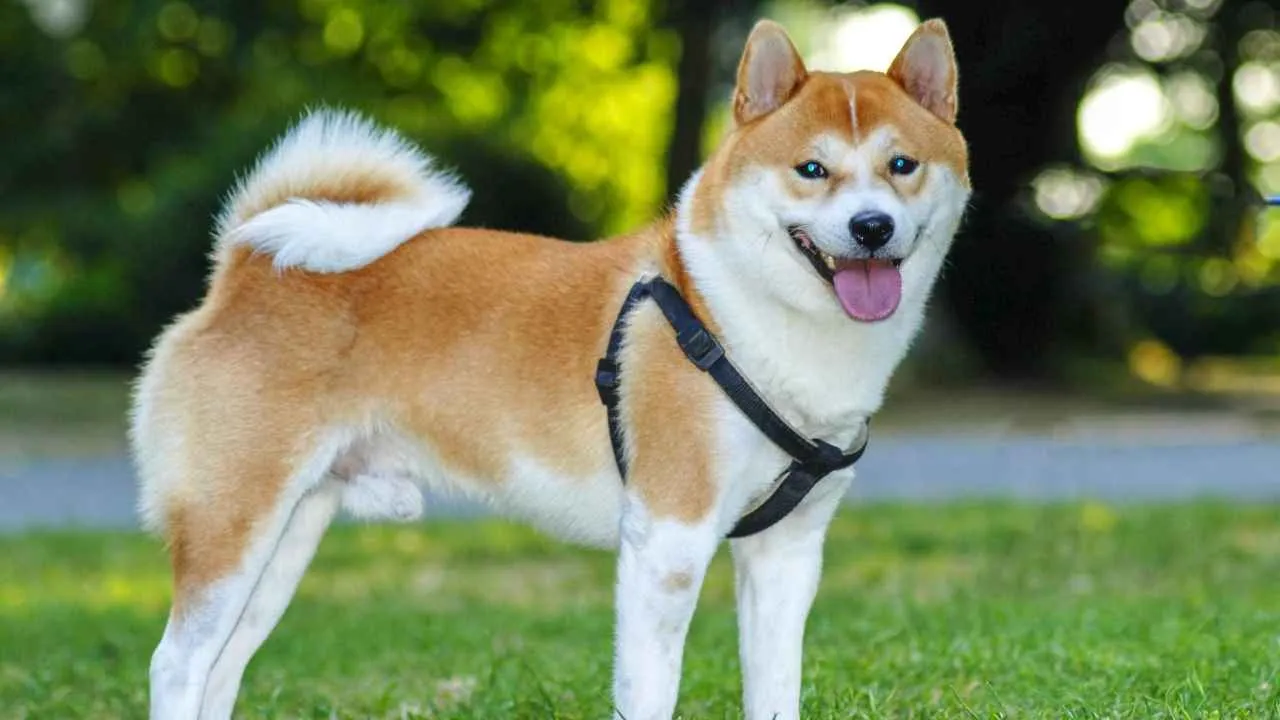
The Shiba Inu, often called the “little brushwood dog,” is Japan’s oldest native breed, tracing back more than 9,000 years. Compact and foxlike, these spirited dogs stand 13 to 17 inches tall and weigh 17 to 23 pounds.
Originally bred for hunting in rugged Japanese mountains, they remain confident, alert, and fiercely independent—traits that make them surprisingly adaptable to modern lifestyles.
Their plush double coat, usually red, sesame, or black and tan, combined with their bright expression, gives them an unmistakable charm. Shibas typically live 12 to 15 years and thrive in both city apartments and suburban homes, provided their energy is managed.
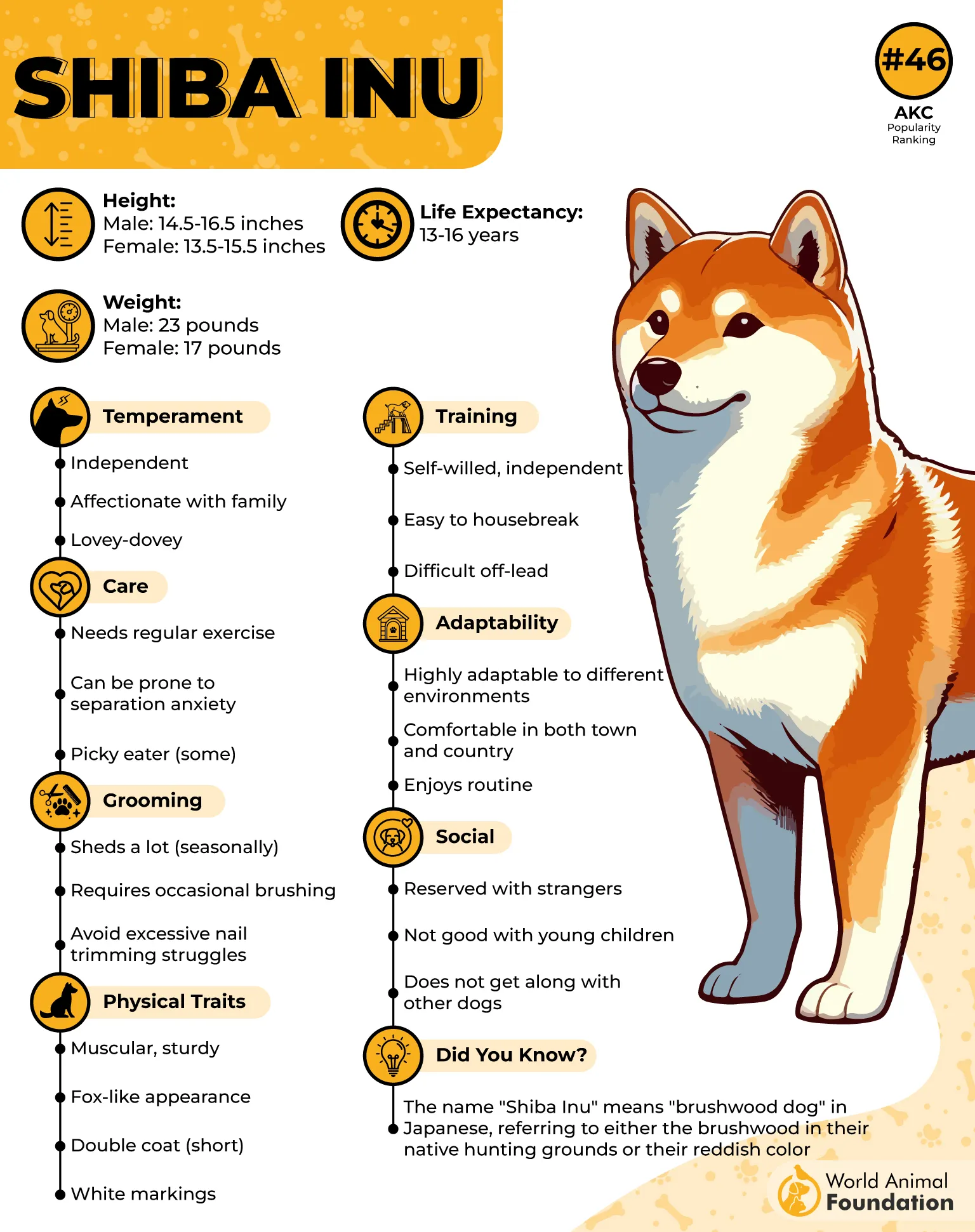
Exercise
Shiba Inus need at least 45 minutes to an hour of daily exercise to keep their active minds and agile bodies content. Walks, interactive games, and safe off-leash play in secured areas prevent boredom and destructive behaviors.
Because of their strong hunting instincts, they should always be leashed outdoors. A well-exercised Shiba is more relaxed and comfortable when left alone for a few hours, especially with puzzle toys for mental stimulation.
Fun Fact: The Shiba Inu’s confident “Shiba scream” is a dramatic, high-pitched yelp they use when overly excited—or displeased!
6. Pug
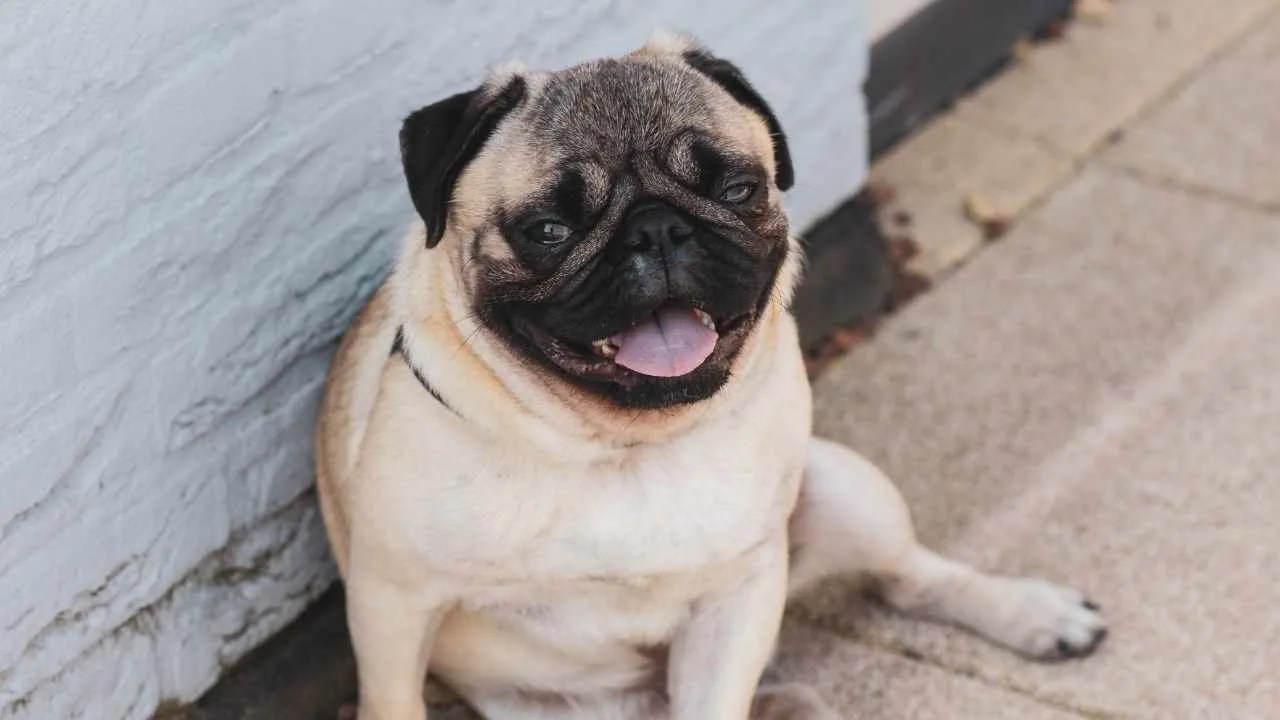
The Pug, with its instantly recognizable wrinkled face and compact, muscular frame, is one of the most iconic small companion breeds. Originating in China over 2,000 years ago, these affectionate dogs were cherished by emperors and later became beloved mascots of European royalty.
Typically weighing between 14 and 18 pounds and standing 10 to 13 inches tall, Pugs are sturdy yet charmingly comical. They boast a smooth coat that comes in shades like fawn, black, or apricot, paired with a distinct black mask. Known as a true companion dog, the Pug thrives in apartments or houses alike and has an average lifespan of 12–15 years.
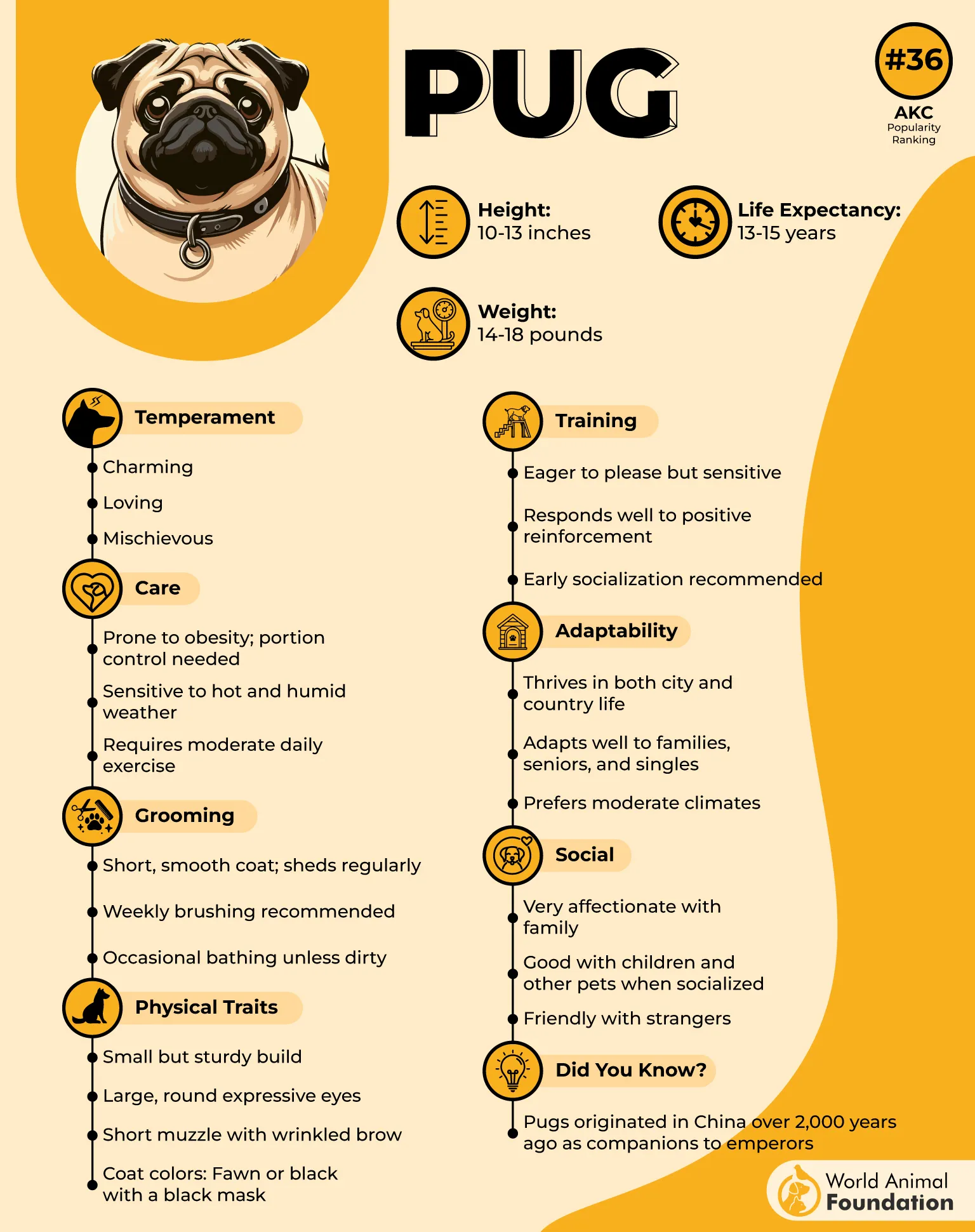
Exercise
Pugs have moderate exercise needs, preferring short bursts of activity rather than intense workouts. A 30–60 minute routine, split between morning and evening walks or playful indoor sessions, keep them healthy without overexerting their flat-nosed breathing structure.
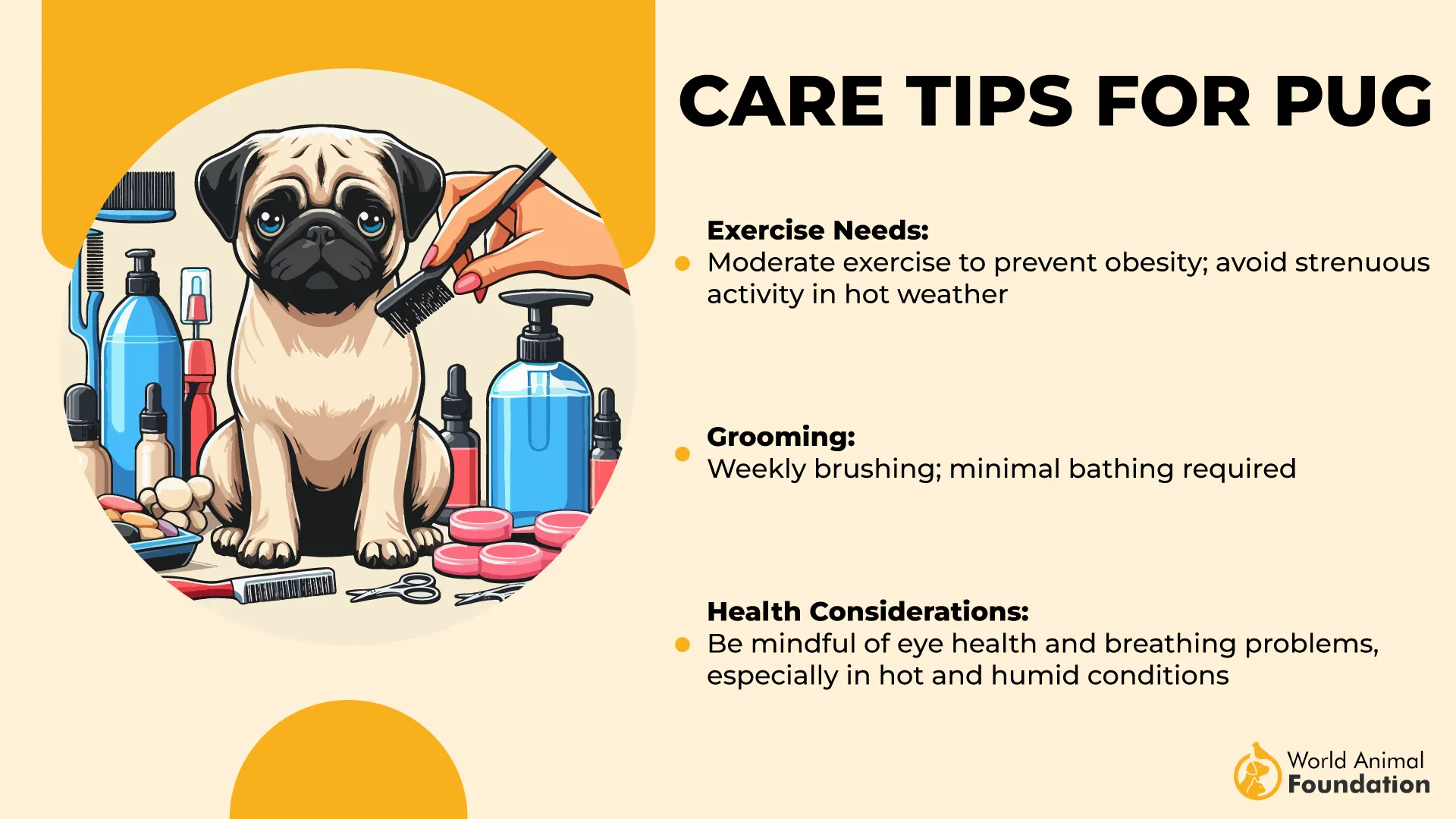
They enjoy interactive toys and gentle games, making them the best dog breeds for owners who want a dog that’s happy to nap while they’re away.
Fun Fact: The Pug’s Latin motto, multum in parvo (“a lot in a little”), perfectly sums up this small breed’s oversized personality and heart.
7. Lhasa Apso
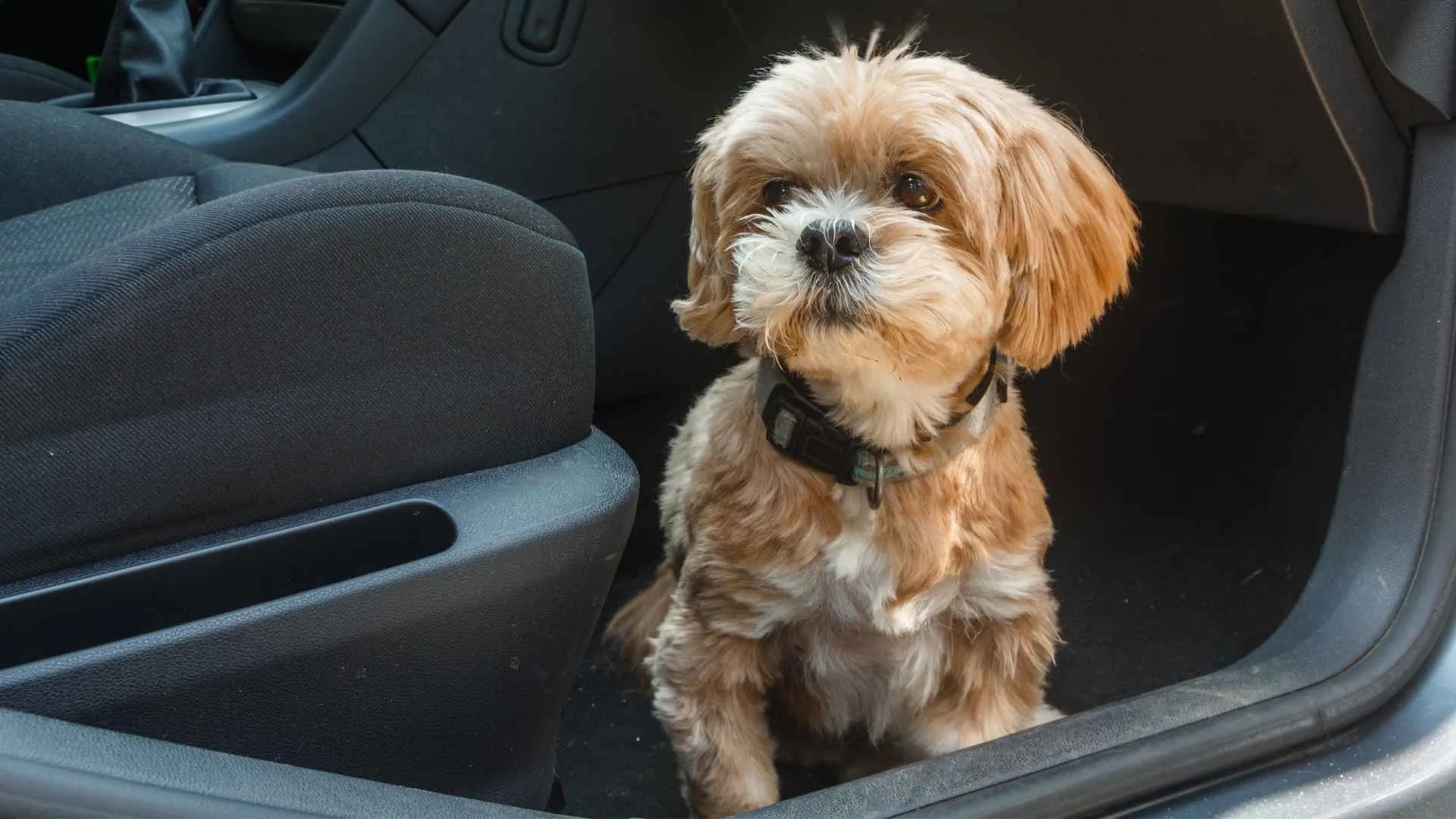
The Lhasa Apso is a small but regal breed with a fascinating past that dates back over a thousand years. Originating from Tibet, these dogs were bred to guard temples and monasteries, earning them a reputation for being both independent and alert.
Despite standing only about 9–11 inches tall and weighing 12–18 pounds, their dignified nature makes them act far larger than their size suggests.
Known for their stunning, floor-length coat that parts neatly down the middle, they are low-shedding but require regular grooming to maintain that iconic, silky appearance. Typically living 12–15 years, these dogs balance a lively personality with a calm presence, making them excellent companions for those who can’t always be home.
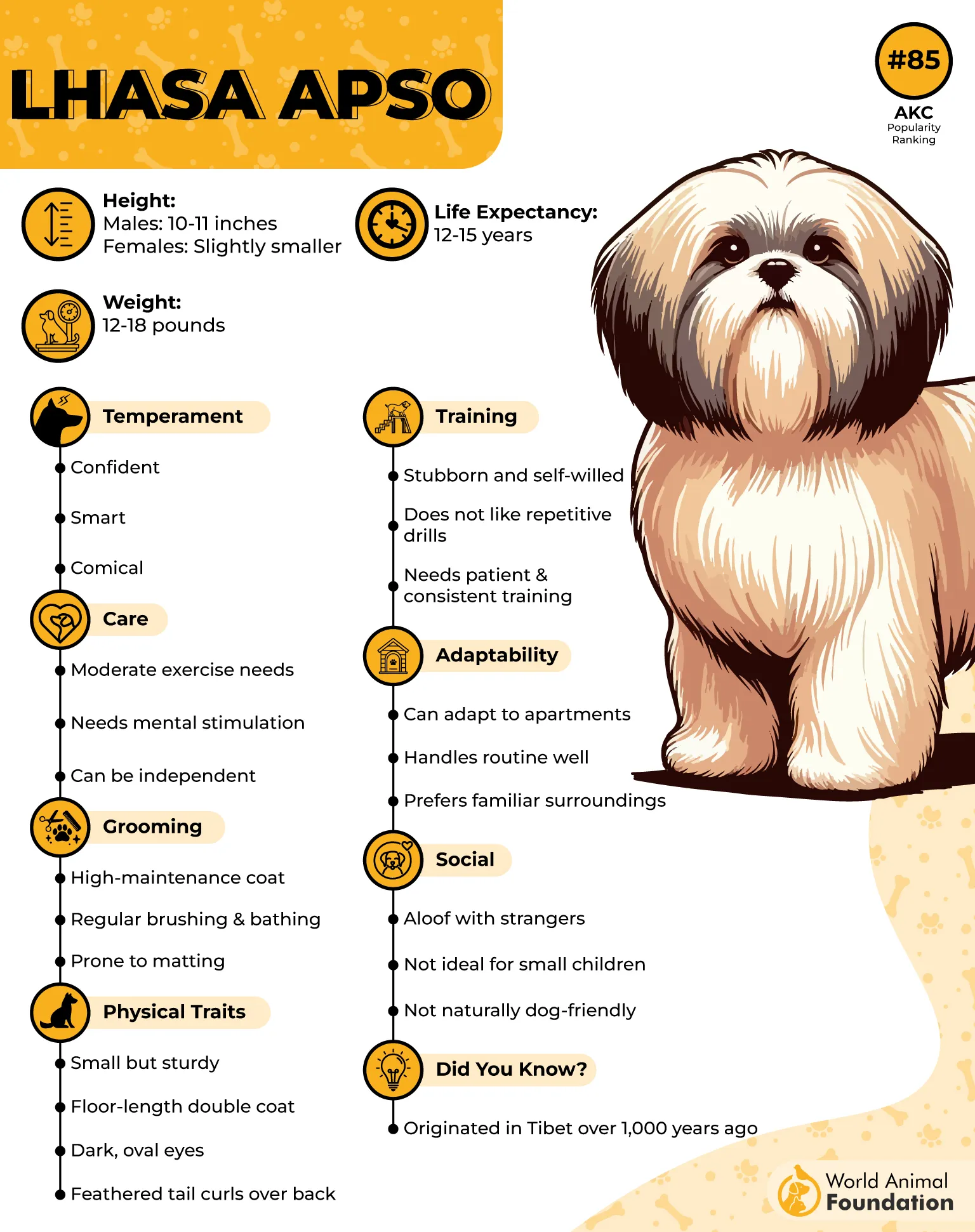
Exercise
Lhasa Apsos don’t demand excessive workouts, but still need a consistent routine to stay happy and healthy. Two 30-minute walks a day are usually enough to burn off their energy and prevent boredom. They’re also skilled at keeping themselves entertained indoors, which is why they adjust well to periods of solitude.
Fun fact: Lhasas were once considered sacred in Tibet and were believed to bring good fortune to their owners.
8. Chihuahua
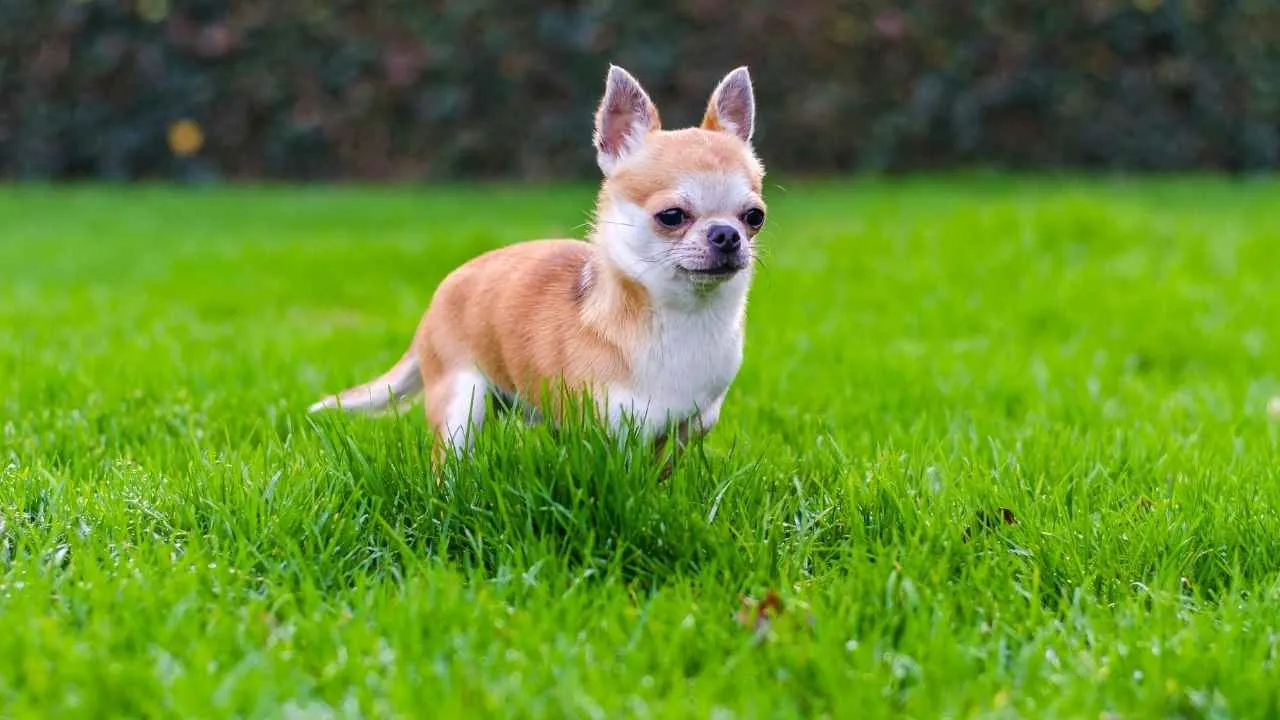
The Chihuahua, one of the smallest and oldest dog breeds in the Americas, is a true icon of Mexico, with a lineage tracing back to pre-Columbian civilizations. Known for their “apple-shaped” heads, bright, expressive eyes, and alert, terrier-like demeanor, these tiny dogs typically weigh no more than 6 pounds and stand under 9 inches tall.
Their coats can be smooth or long, and they come in a wide range of colors and patterns. Despite their small size, Chihuahuas possess a bold personality, often showing a “big dog” attitude in a compact frame. With a lifespan of 14–17 years, they make loyal companions and are well-suited to apartment living.
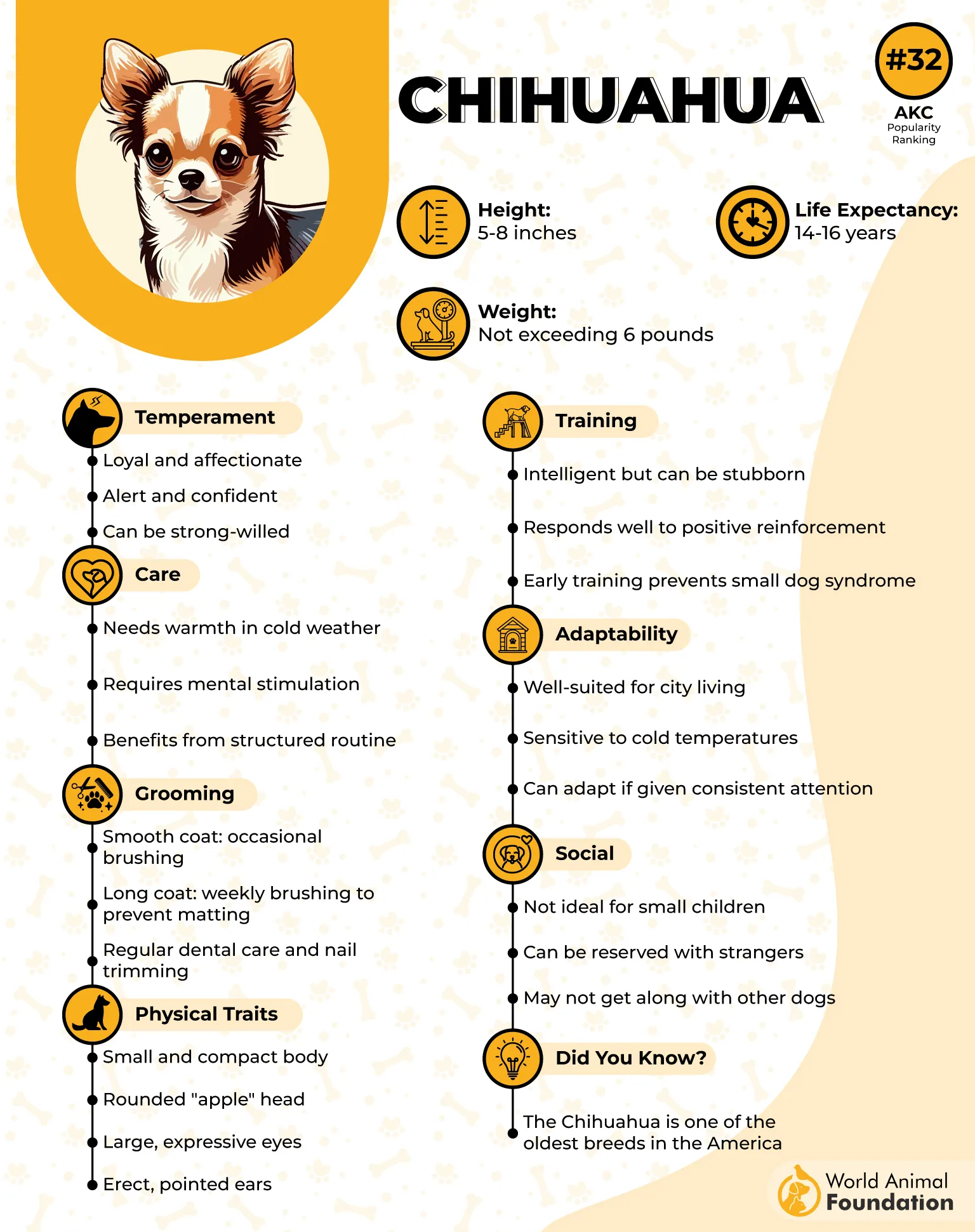
Exercise
Chihuahuas don’t need intense workouts to stay fit, but they benefit from short, daily walks and playful activities around the house. A 10- to 15-minute stroll or light indoor play is usually enough to keep them happy and healthy. Simply following their owners around provides them with plenty of movement, though care should be taken not to overexert these little dogs.
Fun fact: The Chihuahua’s ancient roots link them to the Techichi, a small dog cherished by the Toltec civilization centuries ago.
9. Greyhound
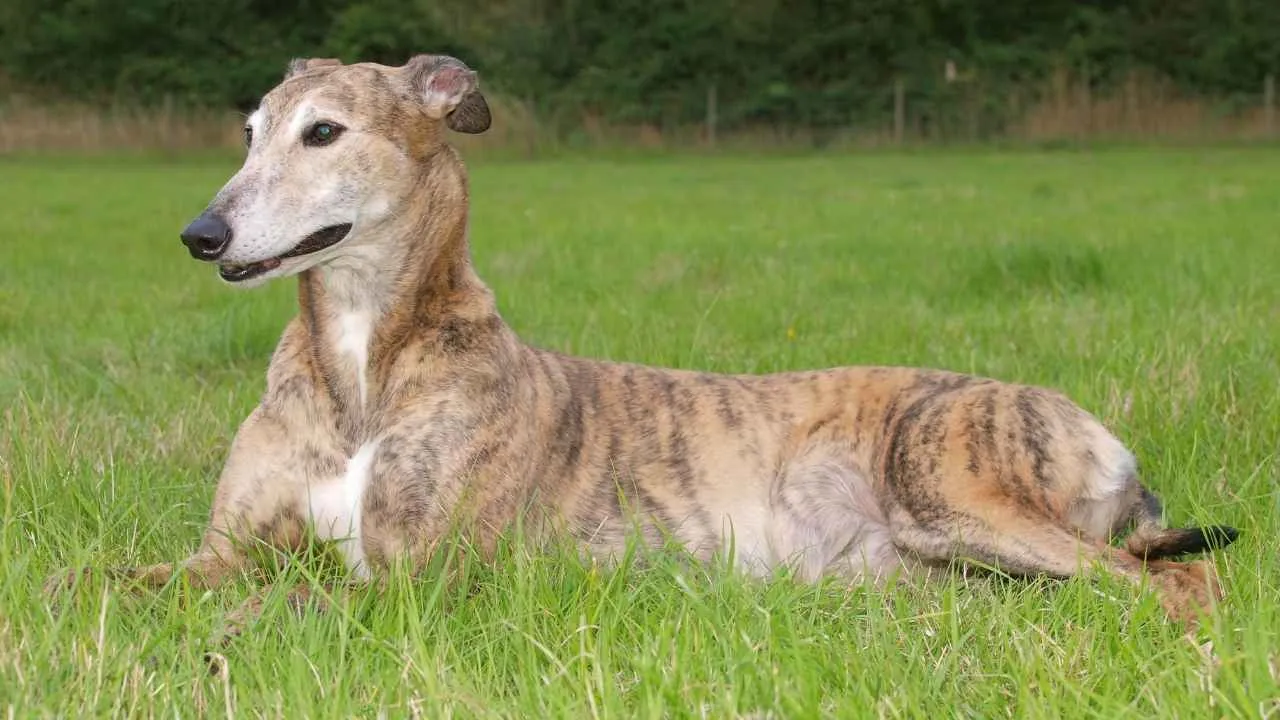
The Greyhound is an ancient sighthound breed, admired for its sleek frame, speed, and gentle demeanor. Standing between 27 and 30 inches tall and weighing 60 to 70 pounds, they’re built for sprinting but are famously calm indoors, often nicknamed the “fastest couch potato.”
Their streamlined bodies, deep chests, and long legs have made them iconic racers and graceful companions for centuries. Greyhounds live around 10–14 years, and their quiet, affectionate nature makes them a surprisingly low-maintenance choice for many households.
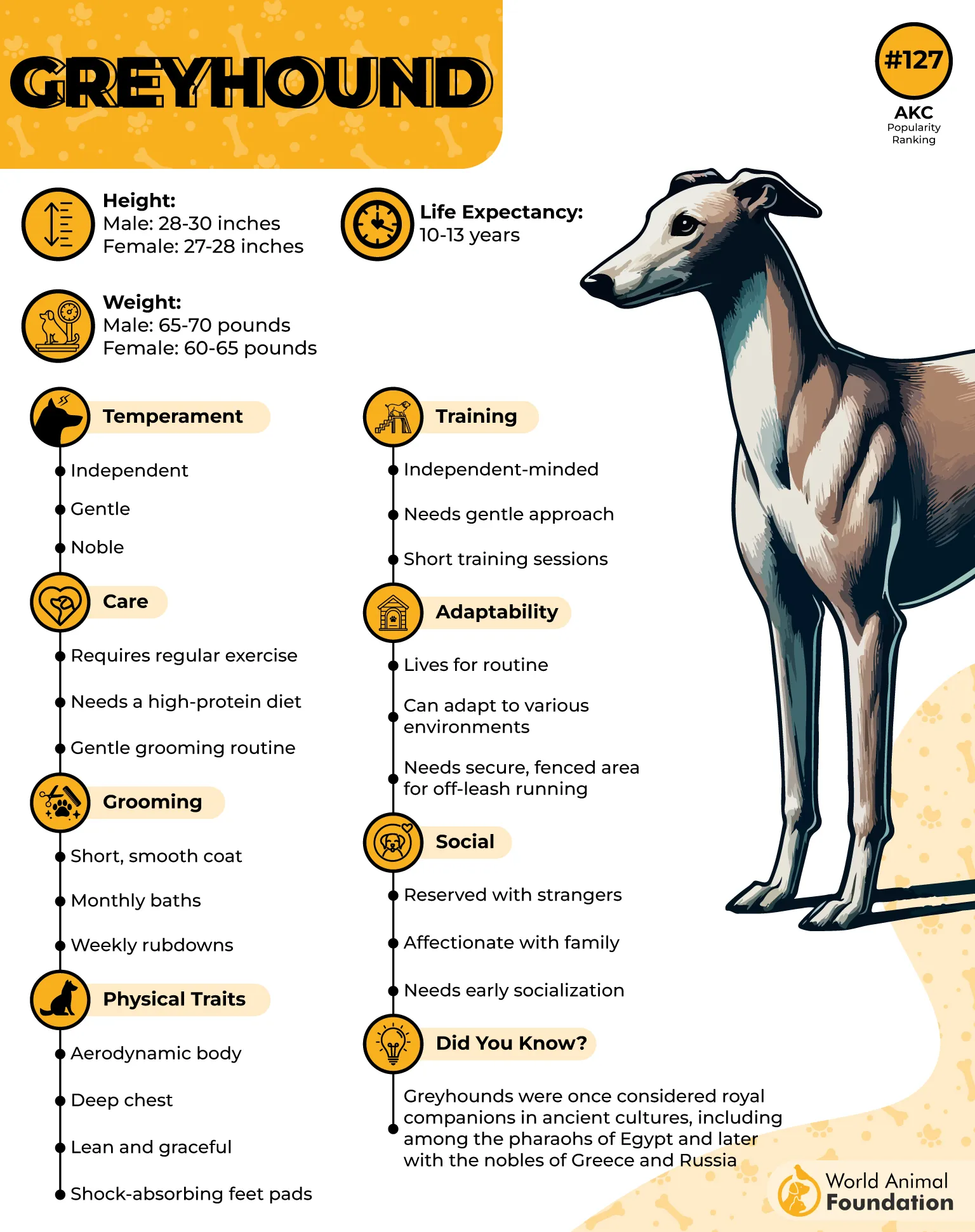
Exercise
Despite their racing legacy, Greyhounds have surprisingly moderate exercise needs. A couple of short, brisk walks totaling about an hour daily is generally enough to keep them happy and healthy. Many enjoy brief, intense bursts of running in a secure area, but they don’t require constant activity and are content lounging for most of the day.
Because they’ve often retired from track life, these dogs adapt well to a relaxed home environment—just be sure to provide opportunities for safe off-leash sprints occasionally to stretch those long legs.
Fun fact: Greyhounds can reach speeds up to 45 miles per hour, making them one of the fastest dog breeds in the world.
Conclusion
Finding the right dog for a busy lifestyle doesn’t mean sacrificing companionship. Some breeds handle solitude with ease, balancing independence with affection. Basset Hounds, for instance, are known for their laid-back nature, content to nap while their owners are away.
Similarly, Maltese dogs and Miniature Schnauzers, when properly trained, can enjoy their own space and own company for short stretches without feeling abandoned. These breeds won’t demand constant attention or constant human interaction, making them ideal for those who occasionally step out for errands or work.
Of course, even adult dogs that cope well with time alone still need preparation. Offering a few toys, a comfortable resting spot, and a routine helps prevent destructive behavior and keeps them happy for extended periods. With the right approach, these dogs become the perfect canine companions—loyal, loving, and able to strike that balance between enjoying your human company and being fine on their own for a while.


